Fourteen years ago, I started a ride to satisfy a sim racing craving.
After racing online and offline with games like Papyrus’ NASCAR Racing 3 all throughout high school, a busier schedule and cramped dorm rooms in college forced me to take a break.
But after graduating, I felt the desire to race again, and my interest was piqued after seeing a new game – er, simulation – advertised on Marcos Ambrose’s racecar in the August 2009 race at Pocono.
Less than a week later, I was an iRacing member and, it turns out, an early adopter of the platform just one year into its own existence.
In my first days on the service, I passed up chances to spend time with friends after work so I could log more laps on track by myself. Later, I worked up the courage and consistency to compete in official sessions against other drivers.
While my driving wasn’t very polished, I still look back on those early days with fondness, remembering how nervous I’d get about every off-track or how excited making a pass even against the slowest backmarker would make me.
That nostalgia was reignited during iRacing’s recent 15th anniversary celebration, which included a special four-week series featuring some of its original cars running on its oldest tracks.
With an opportunity to rediscover some of my sim racing roots, plus a small chance at winning a $1,000-credit grand prize for competing in all four weeks, I strapped in for a ride down memory lane.
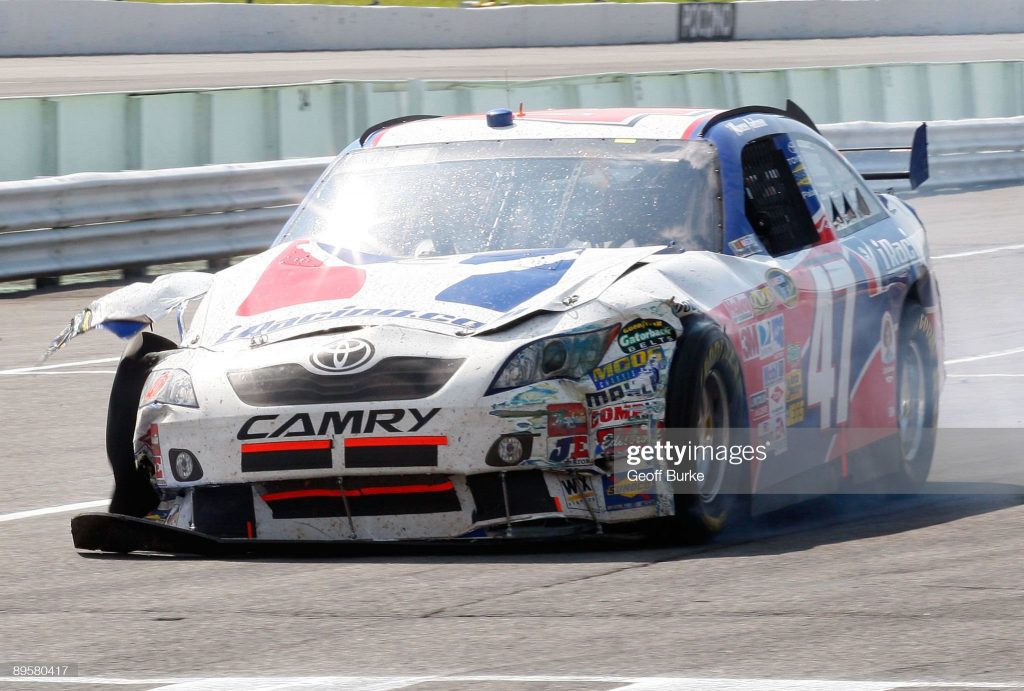
A Roadster Remembered
The Pontiac Solstice was the rookie-level car when I first joined iRacing, and while its lack of power is obvious compared to the GT cars I race now, at the time, it was a good car for a beginner to learn braking points and racecraft without punishing the inevitable mistakes too severely.
Back then, the rookie series alternated between just two tracks – Lime Rock and Laguna Seca – and during my first week driving the Solstice, Laguna Seca was up as the host.
My first race was solid if unspectacular, finishing in third place, ten seconds away from the next closest car. After that, I had the typical incident-riddled rookie-level race that left me eleventh out of twelve competitors and a little unsure about this whole iRacing thing.
I followed that up with a string of podiums, all while shaving tenths off my fastest lap times, and during a Saturday afternoon race on August 29 – just three weeks after joining iRacing – I earned my first official victory.
I remember little to nothing about the race itself, but the results show I won from the pole with a final margin of 12 seconds and only a single off-track incident in the 11-lap race.
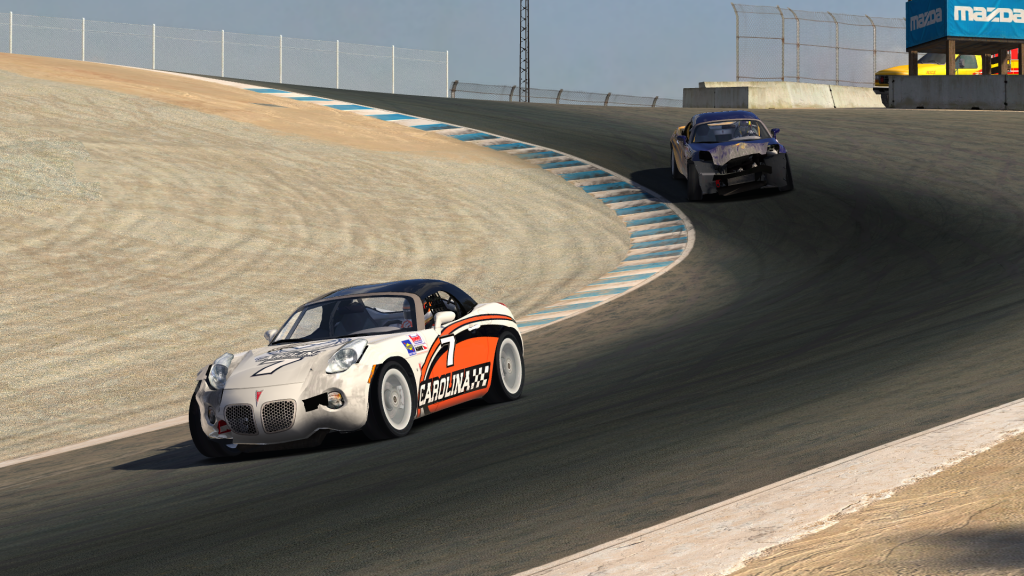
Fourteen years later, I knew my return to Laguna Seca in the Solstice wouldn’t be that easy. But after joining a Tuesday night race session, I thought the same result was possible. In this race, I was the #1 car, and as I learned all those years ago, that carries an expectation to win as the highest-rated driver in the field.
Suddenly, I felt the same nerves as in those early races with the Solstice, and those only increased after qualifying, where I took the pole by three tenths of a second.
At the start, it was clear that the draft was strong enough and the driver behind was quick enough to stay with me, so I’d need to dig into my bag of tricks if I wanted to get away.
The first of those came into play on the second lap. In slower cars, I have often found a shallow entry and hard, late braking into the Andretti Hairpin is an effective way to keep the car on a tight inside line – the shortest distance around the corner – and rotating to set up a fast exit.
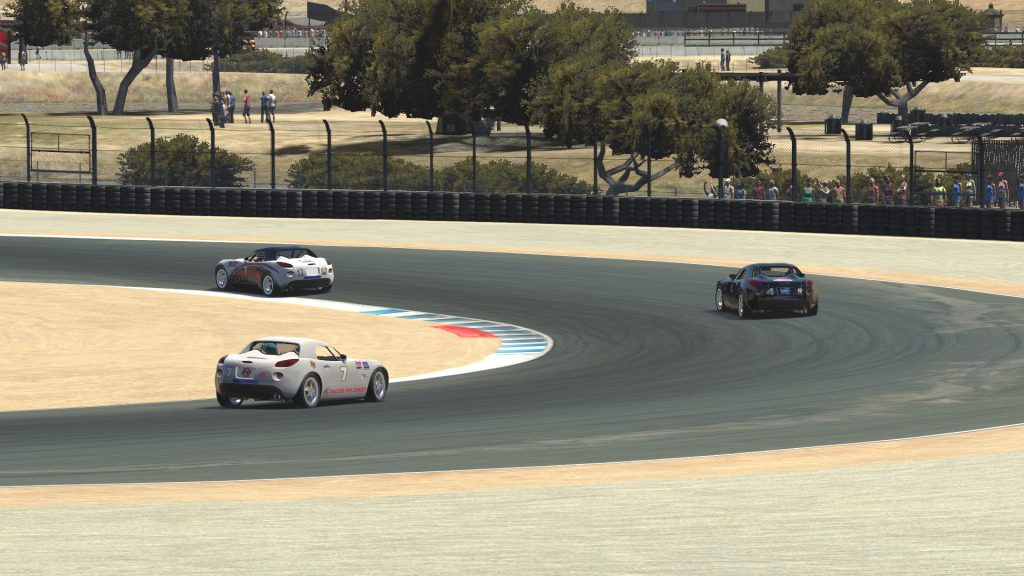
The driver behind me took a wider entry but still tried to cut back for the second apex like I did – and he was going too fast and ran wide. That bought me a buffer of about a second, but he was still within draft range.
The following lap, I took a wide exit out of turn 3, kicking up gravel beyond the kerb. The driver behind again tried to follow in my tire tracks, but he ran even wider, sliding through the gravel and back onto the circuit.
As he entered a battle of his own with third-place driver, I was finally in the clear out front. But just as I’m sure I did in my first ever races here, I held my breath every lap through the Corkscrew and exhaled whenever I came out the other side with all four tires on the road.
After a short but well-executed seven laps of driving, I returned to victory lane in the same car/track combination where it all started for me fourteen years ago. It was a rewarding result, but I couldn’t rest just yet with three more weeks of throwback racing ahead.
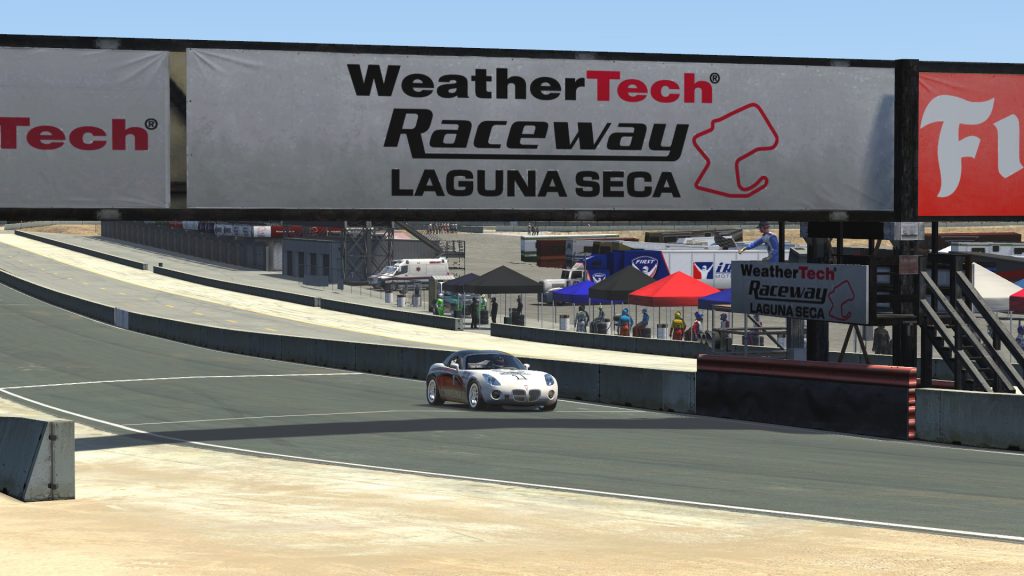
(Re)living Legends
Despite coming from an oval racing background with the NASCAR games I grew up playing, I was slow to try the oval side of iRacing. In fact, it took more than nine months after I joined the service before I ran my first official oval races.
Those came in the Legends car, which like the Solstice was underpowered but ideal for learning the dynamics of side-by-side short track racing.
My earliest races at South Boston – a track I knew from NASCAR Racing 3 – were again a mixture of progress and pandemonium, but my biggest hurdle was putting a complete race together and not fading or slipping up in the closing laps.
A Wednesday evening race in May 2010 seemed to be going the same way, as I led laps early but fell back to second place by mid-race. But this time, the car ahead slipped up and I retook the lead in the closing laps.
However, another car had followed me through, and he was all over my rear bumper and not making any mistakes. As we took the white flag, I made one of my own, pushing too hard on old tires and opening up the bottom lane for him in turn 2.
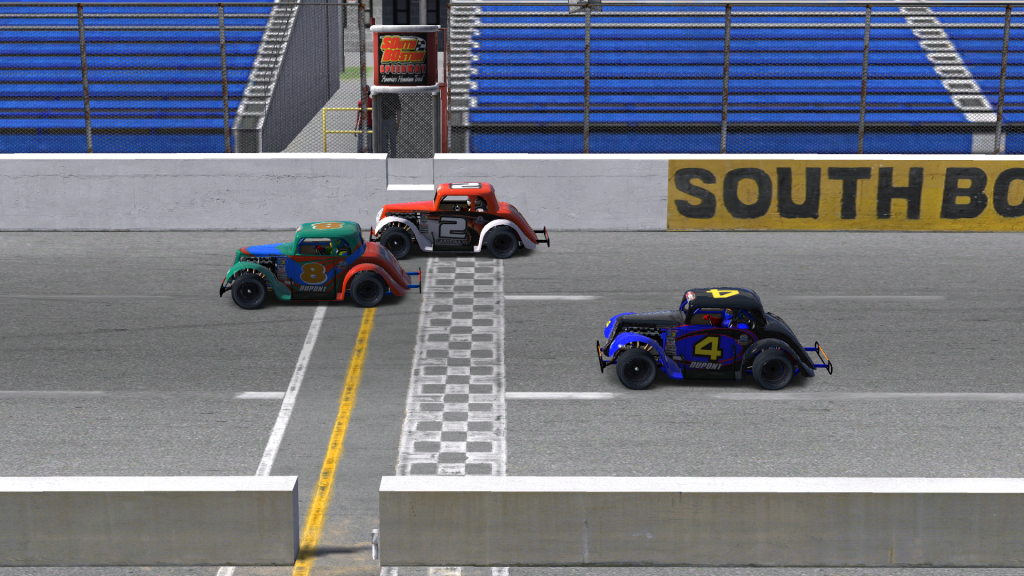
We ran side by side down the backstretch, all with a lapped car just ahead. I held my higher line through the final corners and we nearly crossed the finish line three-wide, splitting the lapped car. But my momentum around the top paid off, and I won by just a tenth of a second.
A photo finish like that was a dramatic way to take my first oval win, and I still credit that as the moment I became truly hooked on iRacing and convinced it was unparalleled for online sim racing competition.
Getting back into the Legends car after all these years, the buzzing hornet sound was the same but I could immediately feel improvements to the handling thanks to many iterations of tire model development. The car is now much more predictable when driving close to the limit, and instead of immediately spinning, slides can be anticipated and saved.
Of course, I hoped I would never have to deal with those in my race, which was early on a Thursday morning. I was again the highest-iRated driver in the field, but with many rookie drivers in the 12-car field, it seemed like survival rather than speed could be the key.
I qualified on the pole and got a good start while chaos unfolded behind me. The third-place car got loose exiting turn 2 and collected nearly half the field behind him. While that could have thinned out the field, it could have also meant many off-pace or damaged cars returning to the track during the 30-lap race.
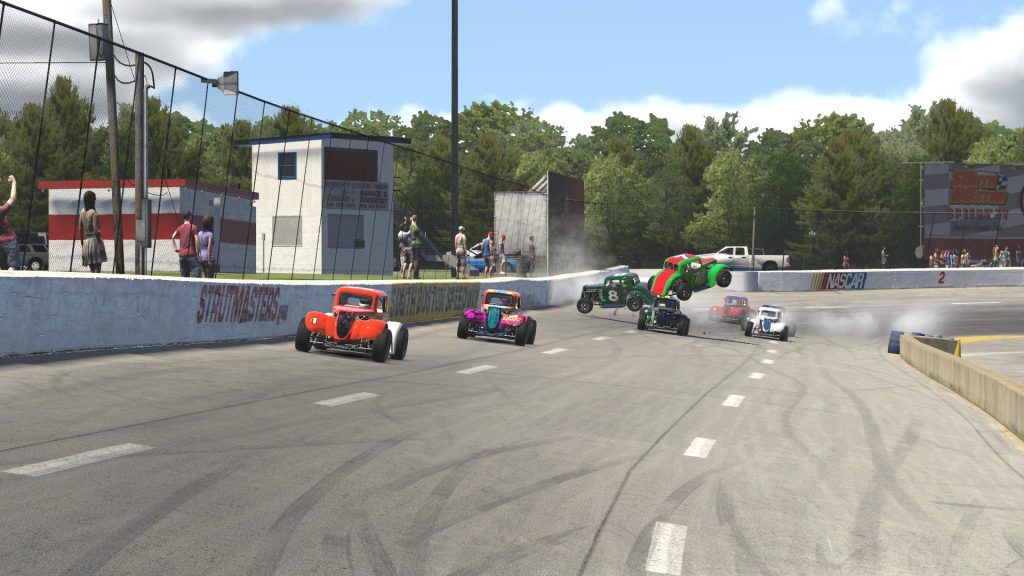
As I stretched out a gap over second place, I started taking it easy when lapped cars filled my windshield, giving a little extra room when passing them.
I was also careful to manage my tires, because even in a 30-lap run in practice, I noticed that pushing early on resulted in some severe falloff by the final few laps, which turned the normally nimble Legends car into a dump truck. Whether I was in a close battle or negotiating lapped traffic, I couldn’t afford that loss of handling in a late-race situation.
This time around, though, I was comfortably alone out front, aside from a few courteous slower cars around me in the closing laps. The best battle on track was for second place, nearly nine seconds behind me.
While my return to the Legends car lacked the drama of a photo finish, it still brought the success of a victory, bolstered by consistent driving and years of experience with tire and traffic management.
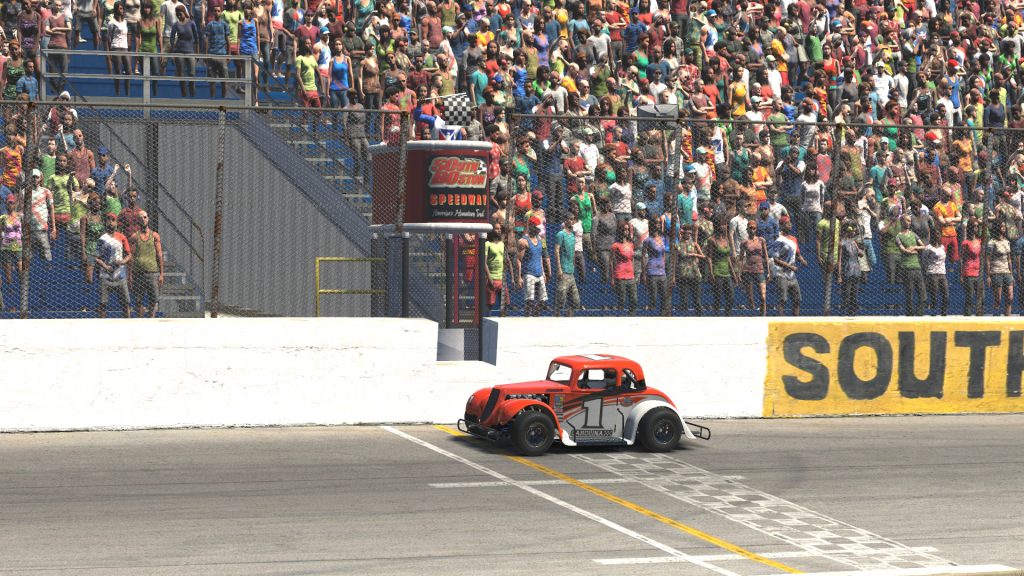
Skipping Back in Time
After competing in the Solstice, my next step up the road racing ladder kept me on the tin top side of the service, running cars like the Volkswagen Jetta and Ford Mustang.
But on the open-wheel side, the Skip Barber Formula 2000 car stood out as one of the most popular cars on iRacing, and one that probably should have caught my interest sooner.
After all, in June 2007 – a year before iRacing launched – my dad and I took to the track at Virginia International Raceway in similar Formula 2000 cars as part of the Bertil Roos Racing School.
Looking back, I can only imagine that having iRacing then would have dramatically sped up my learning curve – and my lap times – in that racing school.
Alas, my starts in the Skip Barber have been few and far between, including some as part of my Summer Road Trip at Silverstone in 2017 when I infamously bump-drafted my teammate Karl straight into a crash.
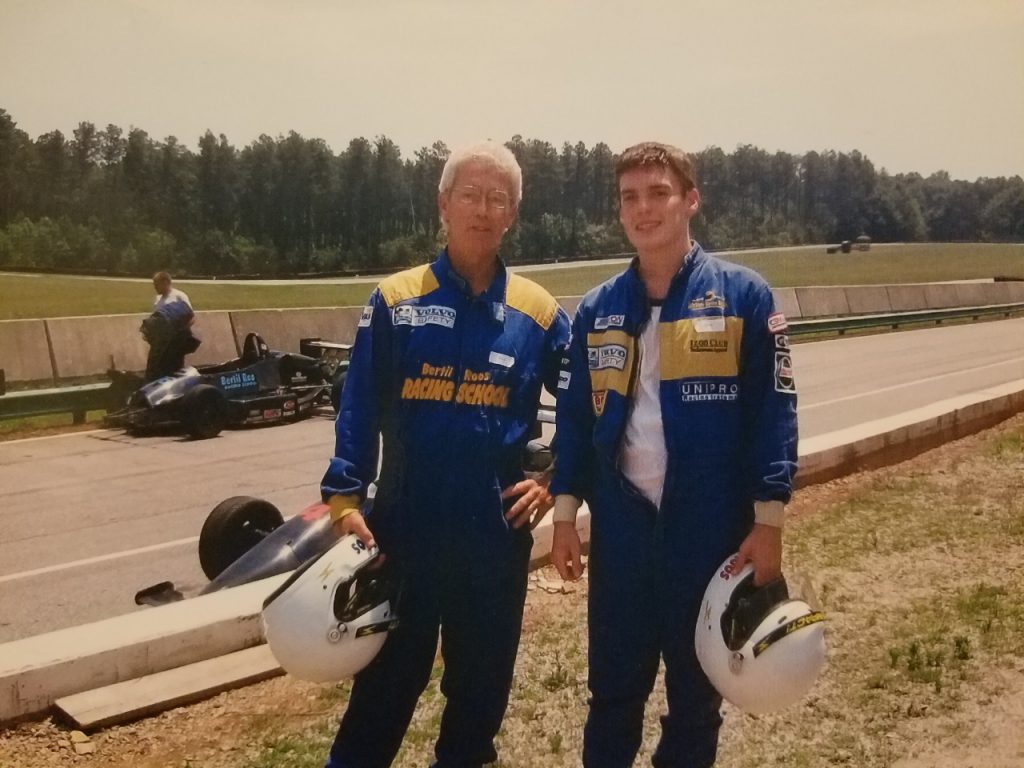
To get another taste of the Skippy and my own real-world racing experience, I took to the track at VIR, running the same south course layout my dad and I drove together 16 years ago.
In my first test laps, I certainly felt a sense of familiarity – although the comfort of my office was a much different atmosphere than the sizzling 95-degree weather on the day of the racing school.
Mainly, I remembered how tricky of a track VIR’s south course is. While it’s just 1.65 miles long, it packs plenty of challenging corners, including the appropriately named Bitch – a tight hairpin at the end of the frontstretch
– followed by a blind entry to the downhill esses, and concluding with Oak Tree. All these years later, the namesake tree itself is gone, but it remains a difficult corner to get right.
However, I could tell that my experience on iRacing – plus a little from real life – helped me get up to speed. I was able to pick out the fastest lines through the corners, sense the grip level in the tires, and do what I have always done best on the sim: string together consistent, clean laps.
Those skills would all come in handy during my Thursday night race session, where it was clear my biggest opponent might be myself. I was again the highest-rated driver in the field and nearly two seconds quicker than the field in qualifying, so as long as I could stay on track, the win seemed easily in reach.
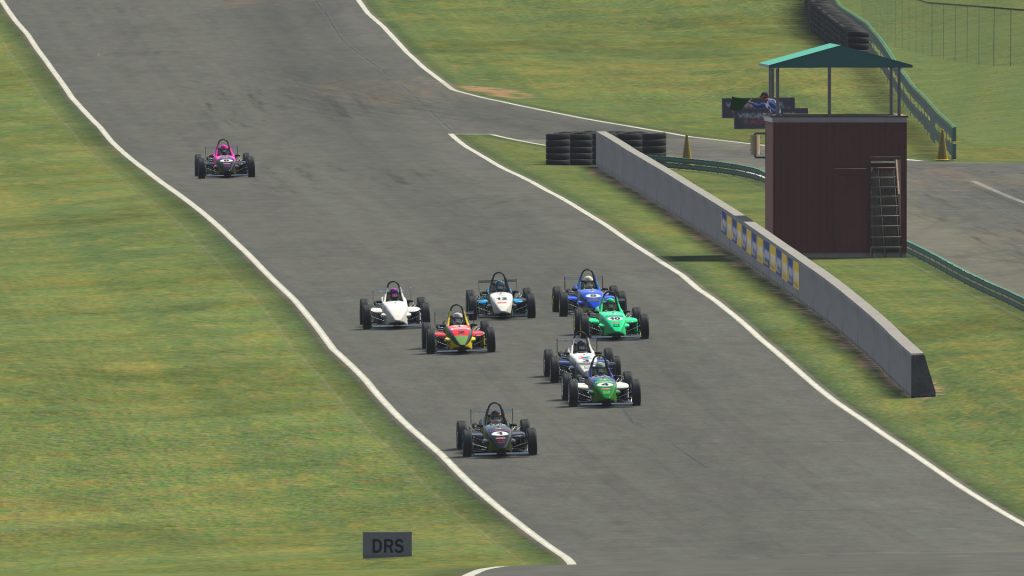
As at South Boston, I got a helping hand early in this race, as the cars behind me piled up in the first turn while I drove away.
After the first lap, I had a six-second lead and was gapping the field with every corner. Those races can be some of the most challenging as a driver, since your mind wanders and you tempt yourself to hotlap, running close to the limit to extract more pace.
But I remembered back to the racing school, when they warned us even dropping a tire in the grass would warrant a pit stop, and convinced myself not to go too crazy searching for speed.
After a few cautious encounters with lapped traffic, I completed the 10-lap race with a 30-second margin behind me. That left me three-for-three in the 15th anniversary series with one week to go.
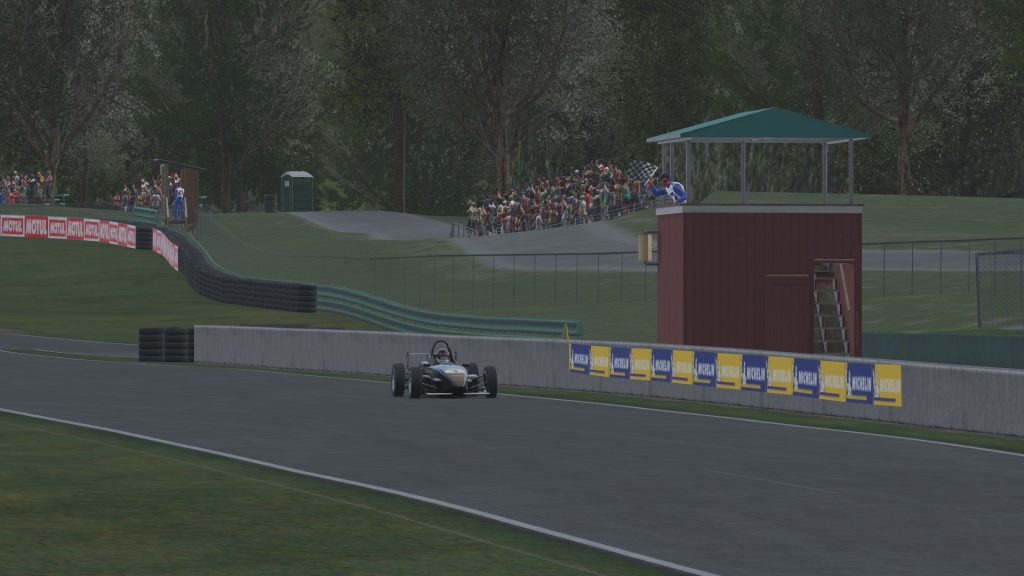
Better Late
While my first year or two on iRacing were spent primarily doing road racing, my early oval experience was enough to draw me back there from time to time, and one of the most popular oval cars to drop in and race was always the Late Model.
That car was even featured in one of iRacing’s first big events. In September 2011, they hosted a two-night tournament at Iowa featuring heat races, semifinals, and a 30-driver main event.
I took part and did much better than expected, qualifying in 30th out of 434 drivers and making it all the way to the finals. Along the way, I competed head-to-head against the likes of former ARCA and NASCAR driver Stuart Kirby, and gridded up for the feature alongside a who’s who of future eNASCAR stars including 2013 series champion and tourney winner Tyler Hudson.
While an early crash around me ruined any hopes of a strong finish, even making the finals over more than 400 other drivers was a proud achievement.
Returning to the Late Model in this final week of the anniversary series, there was a twist: the car itself was different, with the old Monte Carlo replaced earlier this year by a CARS tour Late Model Stock.
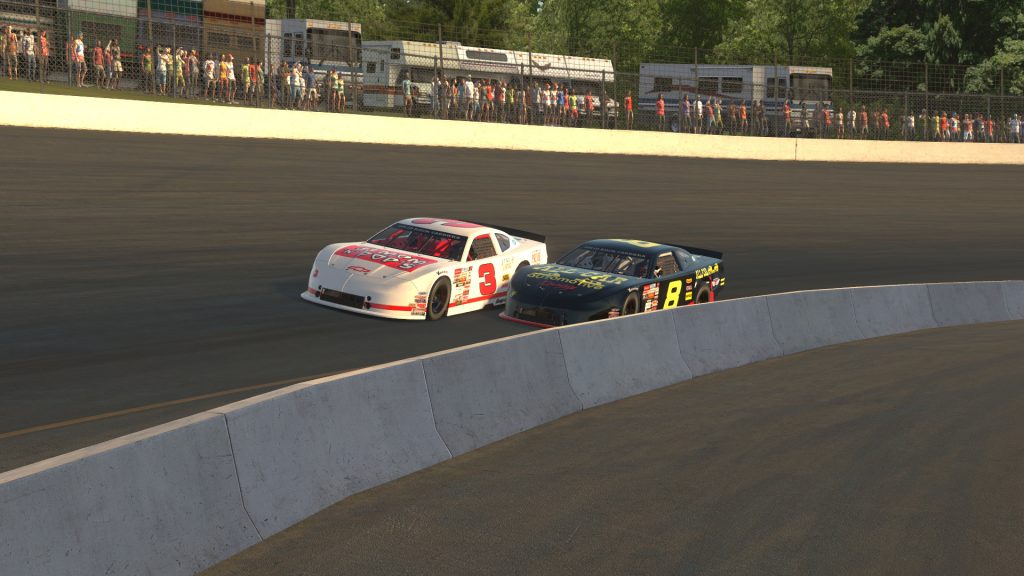
It is a car, though, in which I’ve got some recent experience. Together with my friend Bradley – one of those work friends whose company I eschewed to race fourteen years ago – we have been racing against AI opponents while simulating the mid-90s stock car scene.
We began our mock career mode with the Slim Jim All-Pro Series, a southern late model tour for which we used the new Late Model Stock.
During our race at Concord Speedway, a now-defunct triangular half-mile preserved digitally on iRacing, Bradley and I battled side-by-side for the lead, but contact with the simulated Shane Hall slowed me down and I had to settle for second place.
That left me wanting another chance with that combination, and with Concord on the Late Model’s 15th-anniversary series schedule, I knew I had to race – and win – there to finish up this trip down memory lane.
There were only six drivers in my race session, but it may have offered the best competition of any event in my anniversary series experience. One driver ran faster than me in practice, and another had a high-enough oval iRating that I expected he could be quick in the race.
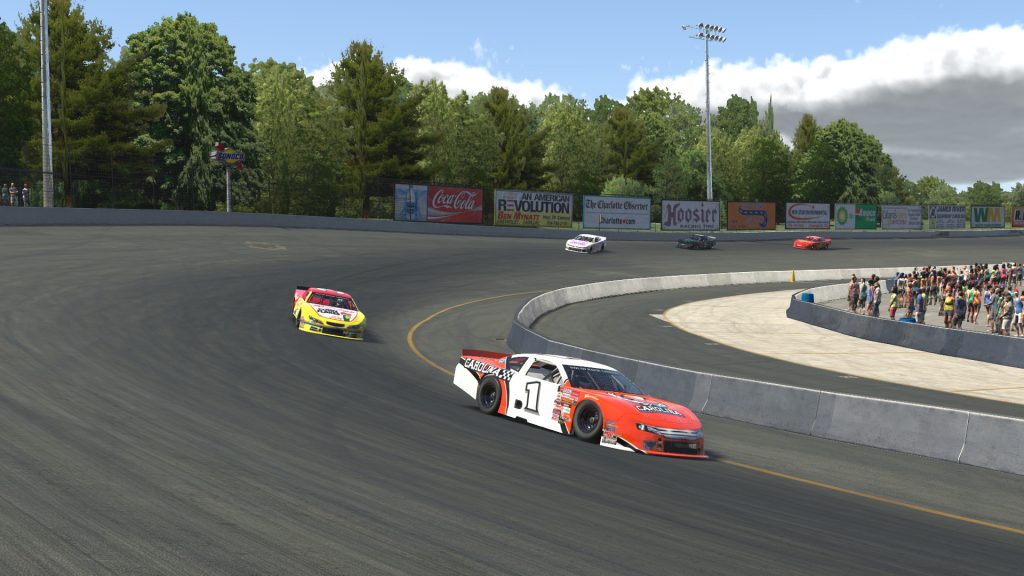
I qualified on the pole and jumped out to a half-second lead, but the fast driver from practice backed up that speed in the race, and he didn’t let me pull away early on.
Eventually, a lapped car limping around the traffic slowed him down and let me open a two-second lead over the pair of quick drivers battling behind me.
With ten laps to go, the higher-iRating driver got the position and was sometimes running a tenth or more faster than me. His speed was undeniable, but with the gap I had built and the laps winding down, my lead was safe until the finish.
While wins haven’t always come easily in my iRacing career – and this was my first official victory in either generation of Late Model – my execution in this race was classic Corey. I didn’t always have the fastest car on track, but clean and consistent driving paved the way to a good result.
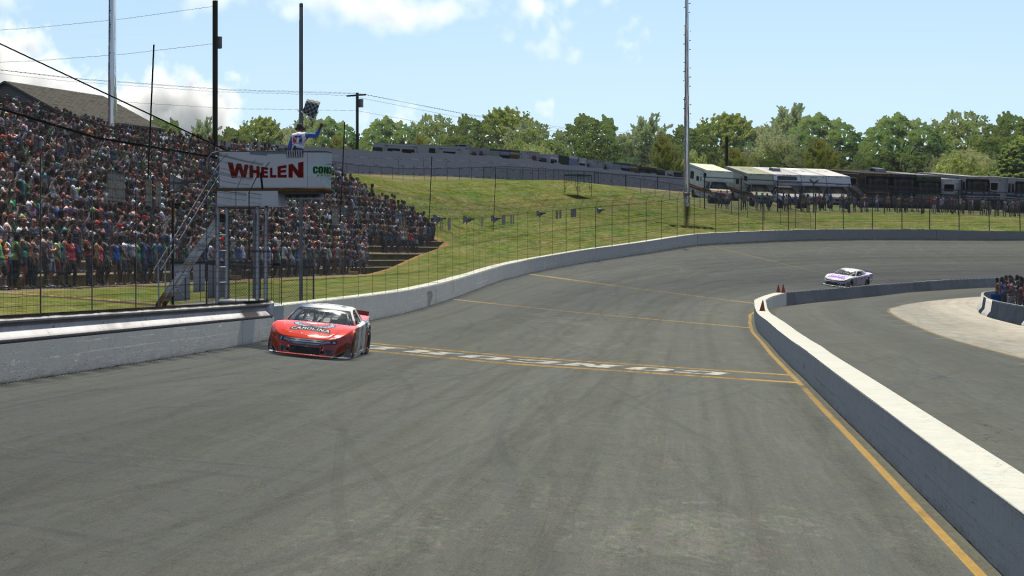
Fourteen years ago, I could have never imagined that iRacing would become such a mainstay in my life for such a long time, even knowing my long history of sim racing before then.
In that time, I have assembled a solid and well-rounded résumé of achievements, from oval league championships to an Indianapolis 500 victory to endurance race wins at tracks including Daytona, Sebring, and the Nürburgring.
Each of those were special moments to be sure, but some of my favorite memories are still my very first races, when I’d get anxious and antsy as the session loaded and my emotions would rise and fall with my safety rating.
Reliving some of those combinations over the past four weeks has made me appreciate the adventure so far and excited to see what the next fifteen years – and hopefully many more – will bring for iRacing and my own sim racing ride.